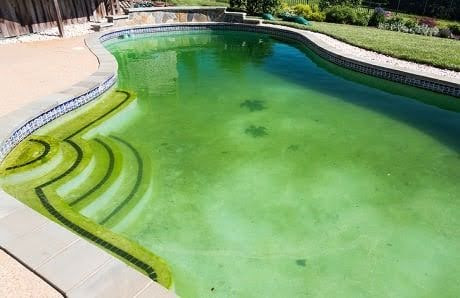When algae takes over a pool, the transformation can happen fast, crystal-clear water becomes a murky green mess in a matter of days. Left unchecked, algae blooms not only ruin the swimming experience but can damage filtration systems, stain surfaces, and create breeding grounds for harmful bacteria. Proactive scheduling with trusted las vegas pool cleaning professionals can help catch early signs and keep chemistry in balance.
For homeowners, especially in sun-drenched regions like Las Vegas, where warm temperatures and intense UV exposure accelerate algae growth, beating algae blooms comes down to two things: precise prevention and swift recovery.
What Causes Algae Blooms in Pools?
Algae is a simple aquatic plant that thrives in warm, still water, especially when exposed to sunlight and nutrients. Even trace amounts of phosphates, nitrates, or debris can fuel an outbreak. Poor circulation, inconsistent chlorine levels, or broken pool equipment often accelerate the problem.
While green algae is the most common, black algae and mustard (yellow) algae are harder to kill and more persistent. All three demand different responses, but the best strategy is always prevention.
Prevention: The Foundation of Algae Control
1. Maintain Stable Chlorine Levels
Algae spores are constantly introduced into your pool through wind, rain, and swimmers. Consistent chlorination is your first line of defense. Use a test kit at least twice a week to maintain free chlorine between 2.0–4.0 ppm. Automated chlorinators or saltwater systems can help reduce fluctuations.
2. Brush and Circulate Regularly
Algae attaches to pool surfaces before it blooms. Brushing the walls and floor weekly disrupts potential growth. Prioritize areas with low circulation, such as steps, behind ladders, and corners. Run your pump at least 8–12 hours daily during hot months to ensure complete water turnover.
3. Shock Strategically
Shocking (superchlorination) kills contaminants that resist regular sanitation. Do it after heavy use, rainstorms, or whenever chlorine demand increases. Use calcium hypochlorite or non-chlorine oxidizers as directed, overuse can cause chlorine lock, reducing effectiveness.
4. Use Algaecide Preventively, Not Reactively
Algaecides should complement, not replace chlorine. Use a polyquat or copper-based algaecide weekly, especially in high-risk months (May through September). Choose a product that matches your pool surface type to avoid staining.
5. Eliminate Phosphates
Algae feeds on phosphates, which enter pools through leaves, fertilizers, and detergents. A monthly phosphate remover can reduce risk without affecting water balance.
Rapid Recovery: How to Kill an Active Algae Bloom
When prevention fails, quick and thorough treatment is critical. Here’s how professionals like Vista Pools LLC
approach aggressive algae removal.
Step 1: Test and Balance the Water
Start with accurate water testing. Adjust pH to 7.2–7.4 to maximize chlorine effectiveness. Calcium hardness, alkalinity, and stabilizer (CYA) levels should also be within recommended ranges.
Step 2: Brush Thoroughly
Before any chemicals are added, brush all surfaces with a stainless-steel or nylon brush depending on your pool type. Dislodge algae from walls, steps, lights, and seams.
Step 3: Shock Heavily
Apply a high dose of pool shock, often 3–5 times the normal amount. Use a chlorine shock for green algae and calcium hypochlorite or sodium bromide for black or mustard algae. Always shock at night to avoid UV degradation.
Step 4: Run the Pump and Filter Nonstop
Allow the filtration system to run continuously for 24–48 hours. Backwash the filter frequently, or clean cartridges thoroughly to prevent clogging.
Step 5: Use a Flocculant (If Visibility Drops)
If your water turns cloudy, a flocculant can bind dead algae and particles together, allowing them to settle for easier vacuuming.
Step 6: Vacuum to Waste
Remove settled debris manually, don’t rely on automatic pool cleaners during algae treatment. Vacuum on “waste” mode to avoid reintroducing spores into the filter.
Step 7: Rinse and Repeat
It often takes more than one cycle to fully remove algae. Rebrush, retest, and resanitize until clarity returns. Persistent blooms may require professional intervention.
Why You Shouldn’t Wait
Algae blooms escalate quickly in desert heat. If you notice even faint green tints or slippery surfaces, act immediately. Waiting allows spores to anchor deeper and makes recovery more expensive.
If you live in the Las Vegas area, hiring a las vegas pool cleaning
expert is a smart way to prevent costly damage and protect your family’s health. Vista Pools LLC offers fast-response algae treatments, routine maintenance, and water testing that catch problems before they grow.
FAQs
How long does it take to remove algae from a pool?
Minor blooms can be cleared in 24–48 hours with proper treatment. Severe outbreaks may take up to a week and multiple rounds of cleaning and shocking.
Is it safe to swim in a pool with algae?
No. Algae can harbor harmful bacteria, reduce visibility, and damage pool equipment. Swimming should be avoided until the water is fully cleared and sanitized.
Do saltwater pools get algae too?
Yes. Salt systems generate chlorine, but algae can still grow if the chlorine level drops or water circulation is poor.
Will algaecide kill existing algae?
Not effectively. Algaecide is best used for prevention. Once a bloom is visible, shocking and brushing are more effective.
Final Thought
Algae blooms are aggressive but beatable. With consistent care and rapid response when outbreaks occur, your pool can stay swim-ready all year long. Partnering with trusted pros like Vista Pools LLC ensures your water remains clean, safe, and inviting, even in the peak of summer.




